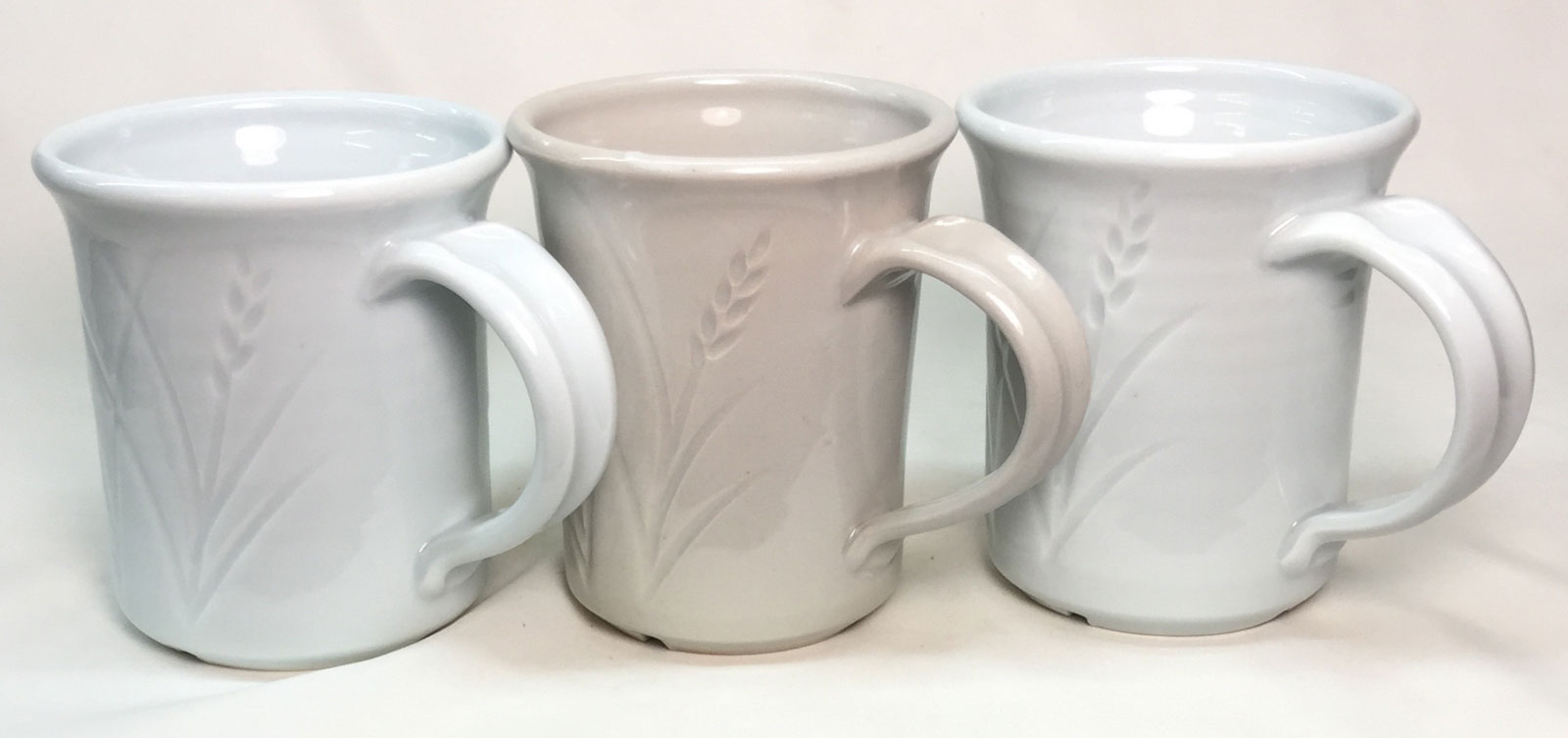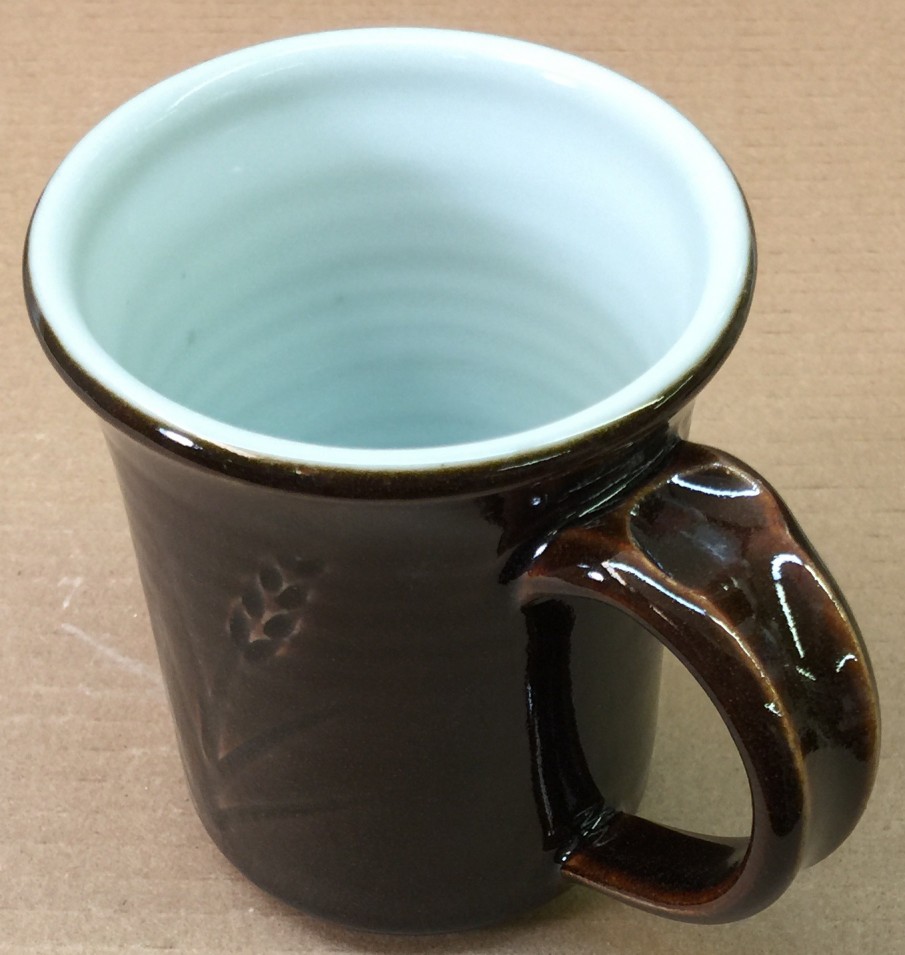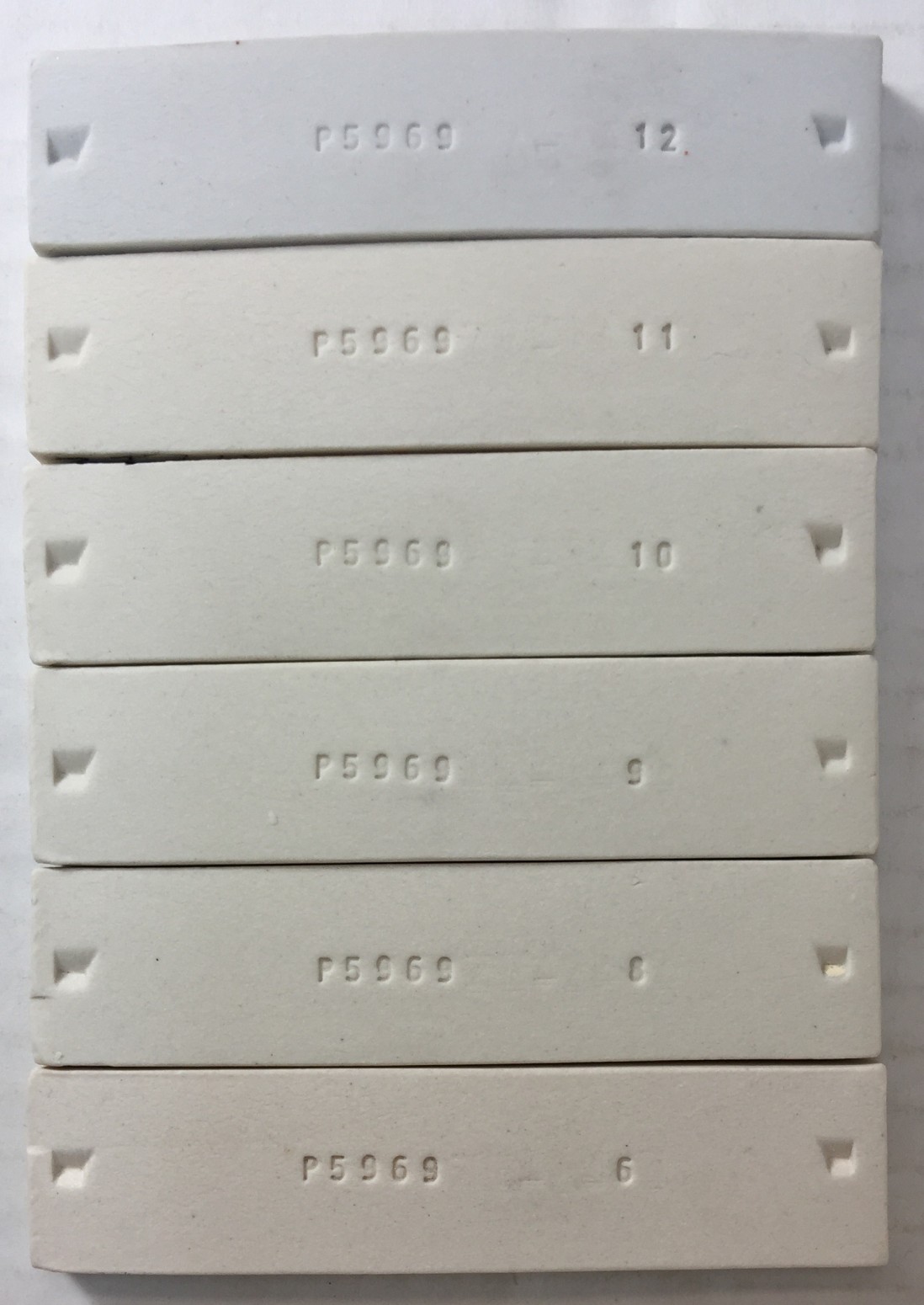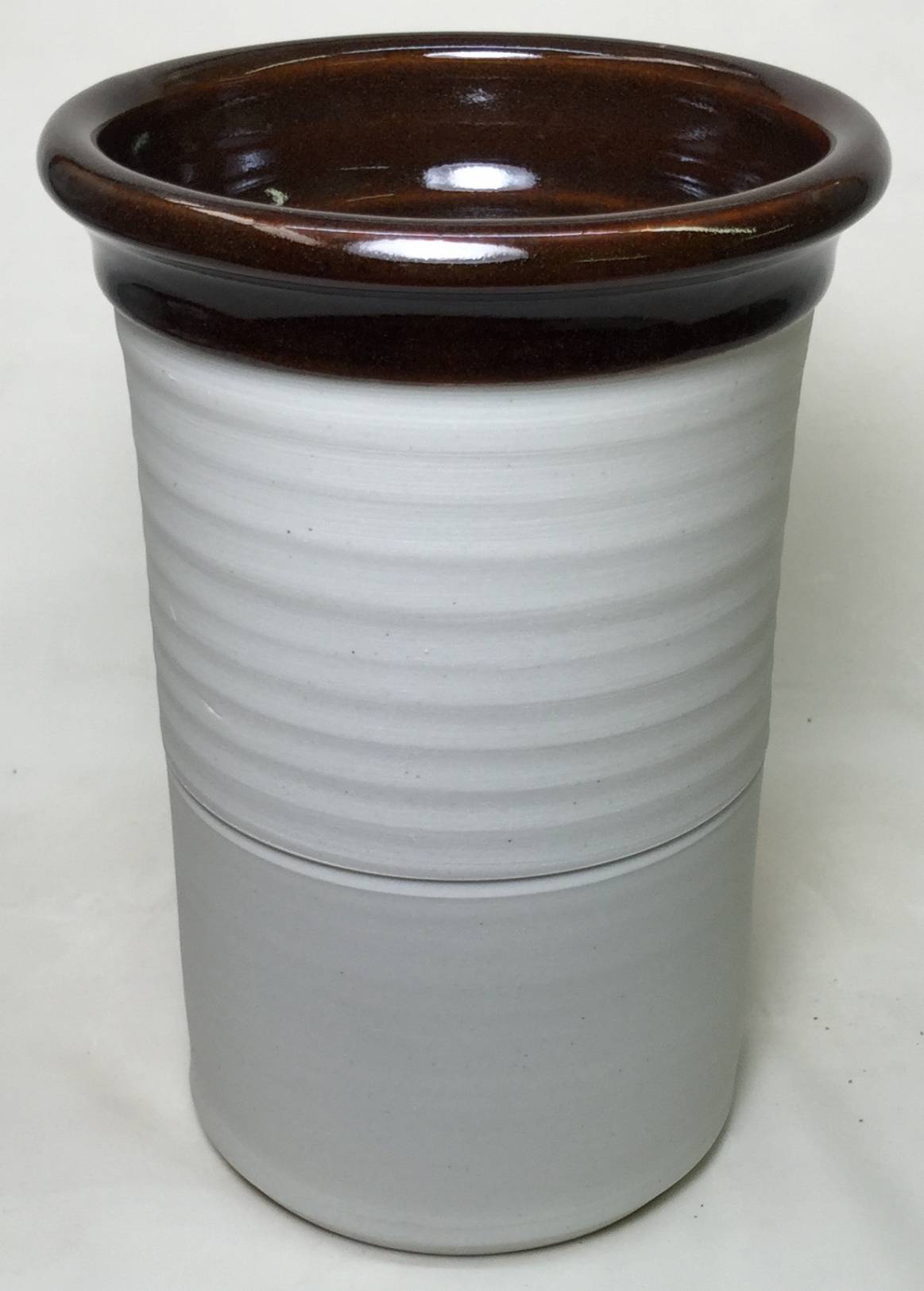P700
Description
High temperature Grolleg porcelain. P700 is our most vitreous cone 10 white body, it is the closest thing we have to a true translucent porcelain body. It is a mix of 50% Grolleg kaolin with feldspar and silica. We also add micro-fine bentonite to improve its plasticity.
Process Properties
P700 is a smooth and slick fine grained body. We add more bentonite than is commonly done for Grolleg porcelains so this is very plastic (if not too soft)!
Drying: Porcelains do not dry as well as stonewares or bodies with particulates. You will get the best results if the clay is not too soft, ware is not too thick, contours are smooth, wall thicknesses are even, joins are few and done with thick slip, the degree-of-wetness in all parts of a piece is kept equal throughout all stages of drying. Large pieces are best made on plaster bats so the bottom can stiffen with the walls. The worst drying performance will occur with thick ware made from very soft clay, the use of non-absorbent bats, where vessel walls are thick at the bottom and thin at the lips or edges, walls are of uneven thickness with lots of joins or abrupt angles (giving cracks a place to start) and where drying is uneven (e.g. lips and edges are permitted to stiffen early on while lower sections remain soft). Large, flat plates are the most difficult shapes to dry, it may be necessary to stretch the time out to a month or more to achieve the even drying needed for success.
Firing
P700 vitrifies to a very pleasant silky surface and is translucent on thin pieces. Compared to our other porcelains it burns much cleaner (to a distinctly blue-white tone at cone 10 reduction firing compared to their off-white or ivory colors).
This is a zero-porosity porcelain so warping during firing can be an issue. Avoiding shapes that lack structural strength (i.e. straight sided cylinders, goblets with flared bases, severely overhung, flared or non-curved profile bowls). Be careful to use kiln shelves that are flat. Kiln wash is needed to prevent pieces from sticking to the shelf during firing.

Coleman Porcelain, P600 and P700 at cone 10R. P700 and Coleman have the same recipe except for one important difference: The former has 10% more feldspar and 10% less kaolin (meaning that cone 10R puts Coleman Porcelain well beyond the point at which it reaches zero porosity). It thus fires more translucent and a little whiter but is much more subject to warping and plucking. P700 is more plastic (so you can make thinner ware). P700 has a slightly higher drying shrinkage (so more care is needed during drying).
Glazing
P700 employs only kaolin (rather than a kaolin:ball clay mix of most porcelains). Notwithstanding this, it fits most common mix-yourself glazes. However attention to fit is still important, even for commercial bottled glazes.
If you wish to use slips or engobes, make them from a base of P700 for the best possible drying shrinkage/fired shrinkage match.
Glaze Recipes
Commercial brush-on glazes: They may or may not fit our clays (check for glaze fit using a BWIW test or similar). For brightly colored glazes (especially with layering) do a leach test (e.g. GLLE test). Consider using a transparent or white liner glaze for food surfaces.
Mixing your own glazes is practical (with our clear guidelines even beginners can make dipping glazes that go on silky smooth and evenly and dry in seconds). If you already do this using recipes from the web, be careful. High-feldspar glazes (having more than about 35%) often craze. Some recipes rely on high melt fluidity to encourage crystallization and variegation (often because of inadequate SiO2 and Al2O3 or containing Gerstley Borate or Frit), view these with suspicion for leaching and cutlery marking; test them well (also test the additionless versions). Be suspicious of any glaze not having good documentation.
Consider using our G1947U glossy or G2571A matte base recipes, just add colorants, opacifiers, variegators (you will find links to much more information and pictures about these). If you have a recipe that is troublesome, consider transplanting its opacifiers, colorants and variegators to these bases instead. http://ravenscrag.com and http://albertaslip.com also have many recipes that work well on porcelains.
Crazing: Functional ware must remain craze-free (crazing is unsanitary and drastically reduces ware strength). Even though ware may not be crazed out-of-the kiln it may do so with time. Do cycles of a boiling water:ice water immersions (BWIW test) on a piece to test glaze fit (by stressing it to bring out any crazing or shivering tendencies).
Thixotropy: If you want the best application properties for one-coat dipping, consider creating a thixotropic slurry. Thixotropic glazes are creamy because they have been thinned and then gelled by the addition of a flocculant.
For slip decoration and engobes be careful to match the fired shrinkage of the slip with the body. Where we do not recommend a specific engobe recipe, consider one based on the body itself. Add 2% VeeGum or Bentonite (the extra stickiness helps it adhere well to leather hard ware). Be careful about adding fluxes (e.g. frit), this increases fired shrinkage creating a mismatch with body that can cause flaking (and can compromise engobe opacity).
If you want to develop and mix your own glazes and engobes consider getting an account at insight-live.com. You can organize a methodical development program and adopt better methods of testing (e.g. melt fluidity, thermal stress, slip-fit tests).
Thermal Expansion
We do not supply thermal expansion values. If a chart is supplied here, please view it only as a way to compare one body with another. Please note that, although you may calculate the thermal expansion of a glaze, this cannot be done for clay bodies since they do not melt. The best way to fit glazes to clay bodies is by testing, evaluation, adjustment and retesting. For example, if a glaze crazes, adjust its recipe to bring the expansion down, fire a glazed piece and thermal stress it (using an IWCT test, 300F into ice-water). If it still crazes, repeat the process.
Physical Properties
Drying Shrinkage: 5.0-5.5% Water Content: 23.5-24.5% Drying Factor: D542
Sieve Analysis (Tyler mesh):
+100: 0.0-0.1% 100-150: 0.1-0.3 150-200: 0.2-0.8 200-325: 3.0-5.0
Fired Shrinkage:
Cone 8: 7.5-8.5% Cone 10: 8.0-9.0 Cone 10R: 8.5-9.5
Fired Absorption:
Cone 8: 0.2-0.8% Cone 10: 0.0 Cone 10R: 0.0
Gallery

P700 cone 10R Mug by Tony Hansen. Alberta Slip (pure) outside. The liner glaze is G1947U transparent.



